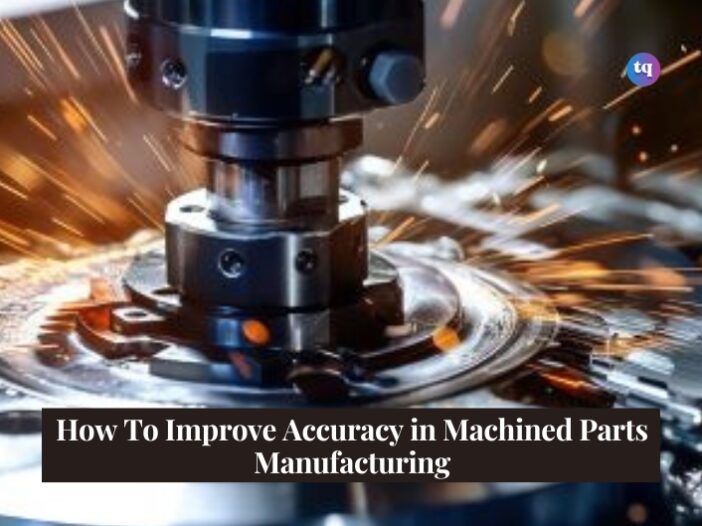
Machined parts manufacturers continually strive to improve accuracy in their production processes. High precision ensures not only product quality but also customer satisfaction. However, the path to peak accuracy has some challenges and issues.
Many factors contribute to deviations in precision, such as tool wear, dimensional variation, tool deflection, and machine vibration. Here are some practical tips to improve accuracy in machined parts manufacturing and achieve better results.
Table of Contents
Understanding the Challenges
Before diving into the solutions, it is crucial to understand the factors causing inaccuracy in machining processes. Some of the common issues machined parts manufacturers face include:
- Tool wear: Over time, machining tools wear down, leading to deviations in the size and shape of the machined parts.
- Dimensional variation: Changes in temperature and humidity can cause materials to expand or contract, causing dimensional errors in machined parts.
- Tool deflection: Forces during machining can cause cutting tools to bend, leading to inaccuracies in part dimensions.
- Machine vibration: Vibration from the machine can also cause deviations in machined parts’ dimensions and surface finishes.
Recognizing why precision is important in plastic machining allows companies to devise optimized strategies for addressing these challenges.
Following Best Practices To Enhance Accuracy
Manufacturers can implement various best practices to improve accuracy in machined parts manufacturing. The following tips highlight some of the key actions you can take to increase precision.
Maintain Tools and Equipment
Regular maintenance and timely replacement of worn-out equipment are vital to ensuring high accuracy. Proper cleaning, inspection, and calibration of machines are essential for maintaining precision.
Optimize Cutting Parameters
Choosing the right cutting speeds and feeds can significantly impact the accuracy of machined parts. Investing time in finding the optimal cutting parameters for each specific operation and material is important.
Implement Process Monitoring and Feedback Systems
Incorporating real-time monitoring and feedback systems in machining operations can help identify variations in accuracy early on, allowing manufacturers to make adjustments and maintain consistent precision in their processes.
Upgrade to Advanced Technology
Investing in advanced machining technologies like CNC machines and robotic arms can improve accuracy by reducing manual intervention and human error. Additionally, implementing stringent quality control measures, including regular inspections and tests, can help to identify and rectify inaccuracies, thereby ensuring the production of high-quality, precise machined parts.
Read also: Evolution of OCR Technology in 2024
Achieving High Precision in Machined Parts Manufacturing
Numerous manufacturers have been able to improve product quality and customer satisfaction by focusing on enhancing the accuracy of their machined parts.
One such example is the aerospace industry, where high-precision machined components are critical for reliable performance and safety. By implementing regular maintenance, optimizing cutting parameters, and incorporating feedback systems, aerospace manufacturers can maintain high accuracy to create products that meet the exacting standards of the industry.
In another example, the automotive industry relies heavily on precise machined parts for optimal engine performance and fuel efficiency. By adopting best practices for accuracy, manufacturers can ensure that the various components work seamlessly together, achieving high customer satisfaction and long-lasting performance.
Learning how to improve accuracy in machined part manufacturing will help with business growth and product quality. Manufacturers can significantly improve product quality, efficiency, and customer satisfaction by understanding the challenges associated with low accuracy and implementing best practices.
FAQs
Accuracy means getting a part that looks and feels exactly like the one you designed, with no errors that can impact mechanical function.
The machine tool is heated.
The error and wear of the tool itself.
CNC machining position error.
Error in the CNC machining system.
Deformation error.
(1) Precision
(2) high- precision
(3) and ultraprecision
(4) machining.
Callipers, which can be Vernier, dial, or digital, are versatile tools for basic length measurement. They can be used on the shop floor, in the inspection room, or even in the home by hobbyists.